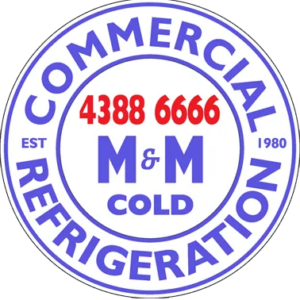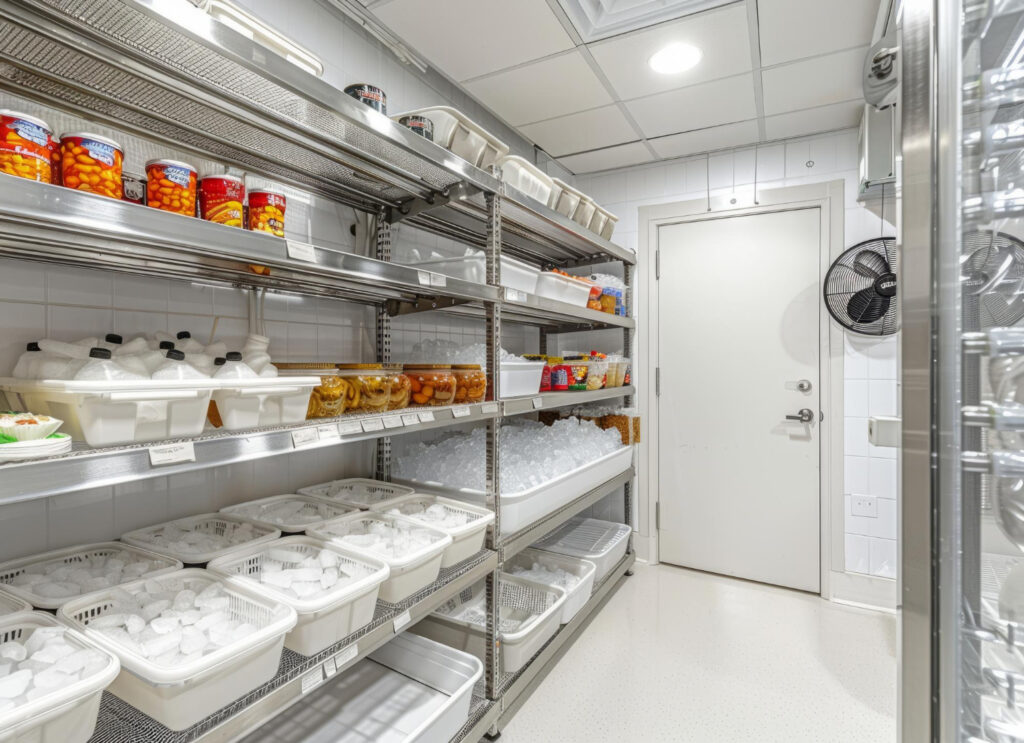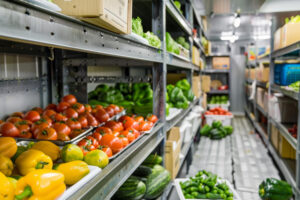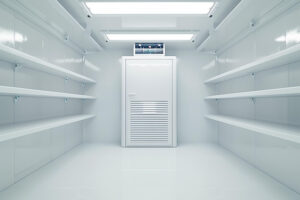Choosing the right cool room design is essential for any business that needs to store perishable goods. Whether you run a restaurant, a grocery store, or a flower shop, the efficiency of your cool room can impact your operations significantly. A well-designed cool room ensures that your products remain fresh and safe, reducing waste and maintaining the quality of your offerings.
When considering a cool room design, it’s important to match it to your specific business needs. You need to think about the size of the space, the types of goods you’ll be storing, and how often you’ll access the cool room. These factors will determine the layout, shelving, and cooling systems that will work best for you. Additionally, making choices that promote energy efficiency can help keep operating costs low while also being environmentally friendly.
Selecting a design that suits your needs is a careful balancing act between functionality and cost. With the right design principles, you can create a cool room that not only meets your storage needs but is also easy to maintain and efficient to run. This guide will help you navigate the essential considerations to ensure you choose the best cool room design for your business.
Assessing Your Business Needs for a Cool Room
Before diving into the design specifics, it’s crucial to assess what your business really needs in a cool room. Consider the types of products you’ll be storing. Different items require different temperatures and humidity levels. For example, fruits and vegetables need different conditions compared to meats or dairy products. Having a clear idea of what you’ll store helps you decide on the type and size of the cool room.
Another key factor is the volume of goods. Do you need a large walk-in cool room, or will a smaller reach-in unit suffice? Think about your peak storage times too. Holidays and busy seasons might require more space. Also, consider the layout of your business premises. The cool room should be easily accessible while not taking up prime customer or work space. Proper placement can streamline operations, making your staff’s job easier and more efficient.
Key Design Elements to Consider
When it comes to designing a cool room, certain elements are key to ensuring it meets your needs and operates efficiently. First is the insulation. Good insulation will keep the temperature consistent and reduce energy costs. Choose high-quality insulation materials that suit your specific requirements.
Important Design Elements:
1. Shelving and Storage: Customisable shelving units make it easier to organise different types of products. Adjustable shelves can accommodate varying package sizes and help maximise the use of space.
2. Doors: The type of door you choose can influence the cool room’s efficiency. Sliding doors save space, while swing doors offer better sealing. Make sure the doors have good gaskets to prevent cool air from escaping.
3. Flooring: Anti-slip, easy-to-clean flooring is essential. Consider materials that are durable and resistant to the cold, like certain types of tiles or specialised concrete finishes.
4. Temperature Control Systems: Invest in reliable temperature control systems. Digital controls allow for more precise adjustments and can be integrated with alarms to notify you if the temperature goes out of range.
5. Lighting: Good lighting is crucial for safety and efficiency. LED lights are energy-efficient and generate less heat, which is beneficial for maintaining a consistent internal temperature.
Taking these design elements into account can significantly improve the functionality and efficiency of your cool room, ensuring it meets the specific needs of your business.
Energy Efficiency and Sustainability Options
Energy efficiency should be a primary concern when designing and installing a cool room. Not only can it save you money on energy bills, but it also benefits the environment. There are several ways to make your cool room more energy-efficient.
Energy-Saving Tips:
1. High-Quality Insulation: Proper insulation keeps the cold air in and the warm air out. This reduces the strain on your cooling system and lowers energy consumption. Look for insulation materials with high R-values, which indicate better thermal performance.
2. Efficient Refrigeration Units: Invest in energy-efficient refrigeration units. These can come with advanced features like variable speed compressors and energy-saving modes. These units are designed to consume less power while maintaining optimal cooling conditions.
3. Regular Maintenance: Keeping your cool room well-maintained ensures it operates at peak efficiency. Regularly clean the condenser coils, check the door seals, and ensure the evaporator fans are working correctly.
Sustainable Choices:
1. Refrigerants: Use eco-friendly refrigerants in your cooling system. These refrigerants have a lower global warming potential compared to traditional options.
2. Lighting: Install LED lighting, which consumes less electricity and generates less heat. This helps maintain the cool room’s internal temperature more effectively.
3. Energy Monitoring Systems: Implement energy monitoring systems to track and optimise your energy usage. These systems can provide real-time data that helps you identify and address inefficiencies.
Making energy-efficient and sustainable choices can make a significant difference in your cool room’s operating costs and environmental impact, ensuring your business runs smoothly and responsibly.
Installation Process and Best Practices
Proper installation is crucial to ensure your cool room operates efficiently and meets your business needs. A well-executed installation can prevent future problems and costly repairs.
Steps for a Successful Installation:
1. Professional Assessment: Start with a professional assessment of your space. Experts can help determine the best location and size for your cool room based on your business needs and available space.
2. Prepare the Site: Ensure the installation site is ready. This includes levelling the floor, ensuring proper ventilation, and having the necessary electrical connections in place.
3. Installation: Follow the manufacturer’s guidelines for installation. This often involves assembling the panels, installing the refrigeration unit, and setting up the shelving and other interior features.
4. Testing: Once installed, test the cool room to ensure it maintains the desired temperature and humidity levels. Check the door seals, lighting, and cooling system for any issues.
Best Practices:
1. Regular Maintenance: Schedule regular maintenance checks to keep the cool room in optimum condition. This includes cleaning the evaporators and condensers, checking refrigerant levels, and inspecting door gaskets.
2. Staff Training: Train your staff on how to use the cool room effectively. This includes best practices for loading and unloading products, keeping the door closed when not in use, and reporting any issues immediately.
3. Temperature Monitoring: Use digital temperature monitoring systems to keep track of the internal conditions. These systems can alert you to any deviations, allowing you to address problems before they escalate.
Following these best practices ensures your cool room operates efficiently and reliably, protecting your products and investment.
Conclusion
Choosing the best cool room design for your business is a pivotal decision that impacts the quality, safety, and efficiency of your operations. From assessing specific needs to incorporation of energy-efficient and sustainable options, every step holds significance. Proper installation and ongoing maintenance can make all the difference in performance and longevity.
Making informed decisions about your cool room setup is not just about immediate needs, but also about long-term benefits. An optimally designed and well-maintained cool room will serve your business effectively, keeping your products fresh and reducing waste.
For expert guidance on designing and installing a cool room that meets all your business needs, contact M & M Commercial Refrigeration Sales Pty Ltd. Our team is skilled in crafting customised cool room solutions that ensure efficiency and sustainability. Reach out to us today to start your journey to a perfectly designed cool room.




